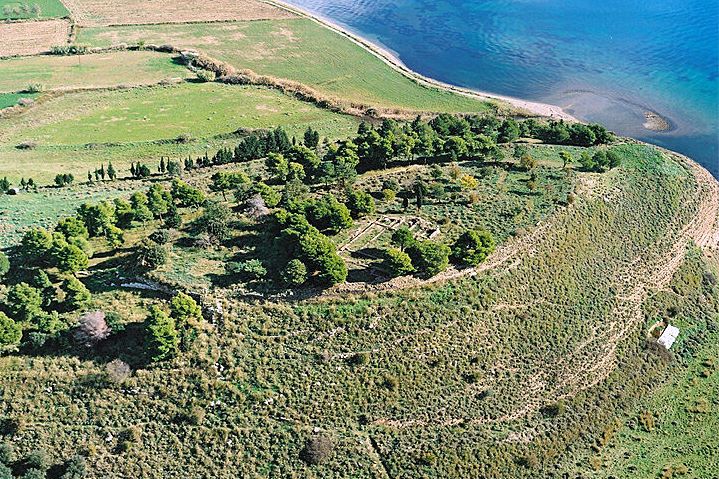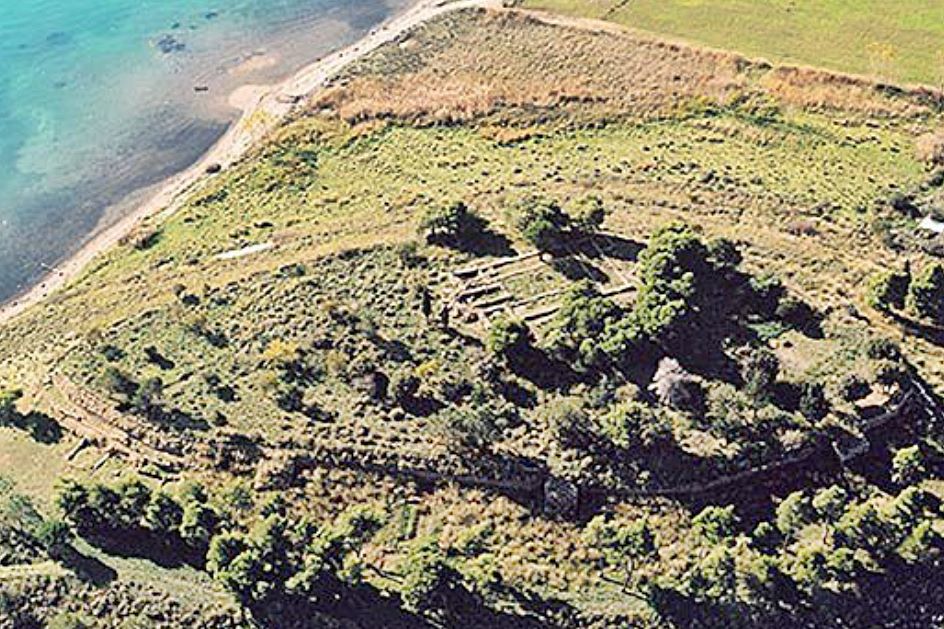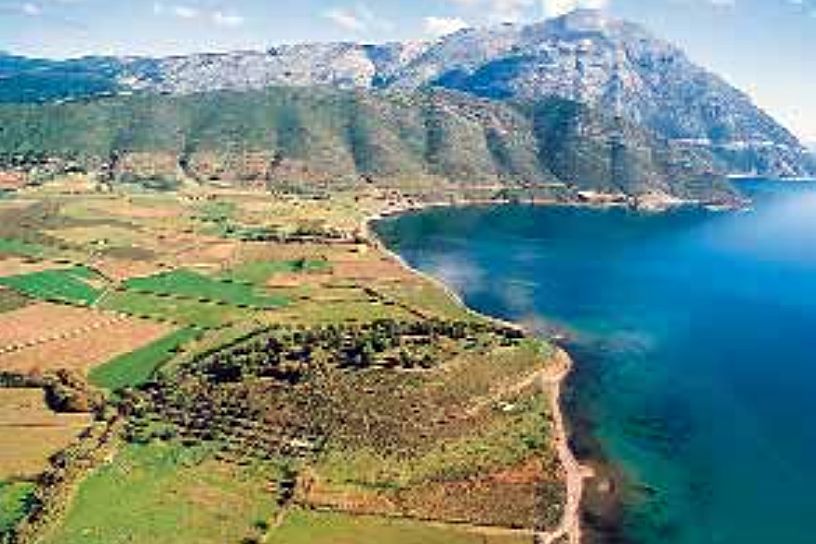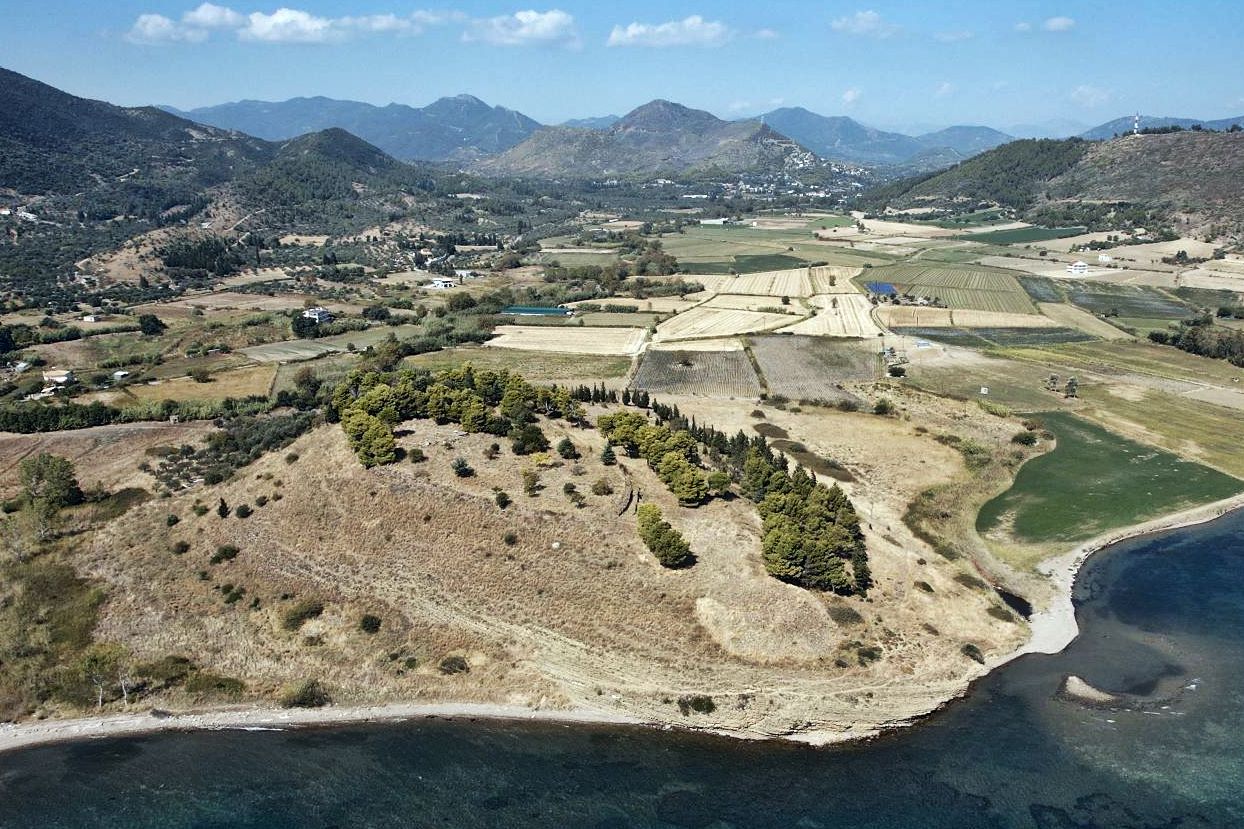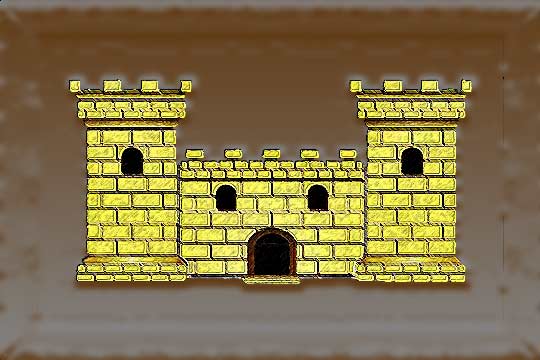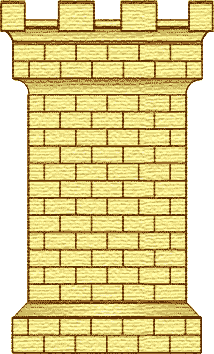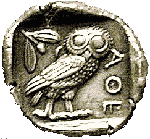Kato Vassiliki, Nafpaktos, Aetolia-Akarnania,West Greece
Ancient Chalkis
| Location: |
| On a seaside low hill 200m east of Kato Vasiliki in Aetolia under mount Varasova |
| Region > Prefecture: |  |
| West Greece Aetolia-Akarnania | |
| Municipality > Town: | |
| City of Nafpaktos • Kato Vassiliki | |
| Altitude: | |
| Elevation ≈ 17 m |
| Time of Construction | Origin | |
| Various periods | ANCIENT |
|
| Castle Type | Condition | |
| Ancient City |
In Ruins
|
Ruins of an ancient coastal city in Aetolia, which has a Byzantine phase as well. The ruins are located on the low hill “Agia Triada”, east of the village of Kato Vasiliki.
Location & Strategic Scope
There are some considerations regarding the identification and location of Ancient Chalkis:
The hill of Agia Triada is on the sea, at the foot of Varasava, 200m from Kato Vasiliki. But there is also an ancient fortress in the area, 1.5 km further west, on the mountainside. This fortification was called Castle of Pangali or Ovryokastro. Ancient walls are preserved in this castle, on two long parallel sides, built with the pseudo-isodomic system. There are also remains of 5 square towers. This castle is a construction of the 4th century BC without newer additions.
Some scholars believe that Ancient Chalkis was there and that in Agia Triada it was simply the port of Chalkis. This hypothesis is not unreasonable, but the prevailing view is that Ancient Chalkis was indeed located on the hill of Agia Triada. This position is also adopted by the Ephorate of Antiquities of Aitoloakarnania and Lefkada. The castle of Pangali may have been the citadel of Chalkis (although it is somewhat far for a citadel).
The Name of the Castle
Ancient Chalkis took its name from the imposing mountain that rises to its west, which in Antiquity was called “Chalkis”, while today it is called “Varasova”.
It was one of the 5 Aetolian cities mentioned by Homer in Iliad II, in the list of ships, with the epithet “ἀγχίαλον” meaning near the sea.
Ancient Chalkis is also mentioned by Thucydides and Polybius. Claudius Ptolemy calls it “Chalkeia”, while Strabo in his Geographica calls it “Hypochalkis”.
The city does not seem to have had any connection, historical or etymological, with the other, better known Chalkis, in Euboea.
History
The hill of Agia Triada was systematically investigated in the period 1995-2001 by a Greek-Danish team, while the early Christian-medieval phases have been excavated earlier by the University of Ioannina (which is when the three-aisled basilica seen in the photographs came to light).
The archaeological findings show habitation of the area from the end of the 4th millennium BC and throughout the Bronze Age, while a significant settlement seems to have existed during the Archaic Period (700-508 BC). In the Classical Period (480-323 BC) the hill was fortified.
Inhabitation continued in the following centuries, but the Middle Roman Period was a time of decline and perhaps abandonment of the city. The city was revived and fortified again during the Early Byzantine Period (5th-6th century AD). During this phase, a three-aisled basilica was built on the top of the hill (dimensions 28✖18.70), with building material from an ancient temple that had existed on the site.
Around the 10th century, the top of the hill was used as a cemetery and a temple of Agios Nikolaos was built there.
The fortification of the ancient city, which surrounds the hill, consists of three ancient lines of walls, at different levels. The initial fortification was built in the Classical Period. Later, during the Early Byzantine Period, walls were built on top of the remains of the ancient walls. In some places they followed a different course.
Later modifications and reinforcements were made to the fortification during the Middle Byzantine Period, and later during Venetian rule, in the 15th century.
Lower on the western side of the hill, traces of an ancient or medieval port have been spotted.
| First entry in Kastrologos: | March 2025 |
Sources
- Ιστοσελίδα της Εφορείας Αρχαιιοτήτων Αιτωλοακαρνανίας Η αρχαία Χαλκίδα
- Λ. ΚΟΛΩΝΑΣ, S. DIETZ, Γ. ΜΟΣΧΟΣ, HOUBY-NIELSEN, «Κάτω Βασιλική - Αρχαία Χαλκίς», ΑΡΧΑΙΟΛΟΓΙΚΟΝ ΔΕΛΤΙΟΝ, τεύχος 50/Β1-1995, σελ.242
- Κωνσταντίνος Α.Ρωμαίος, ΑΡΧΑΙΟΛΟΓΙΚΟΝ ΔΕΛΤΙΟΝ, τεύχος 2-1916, σελ.46,47
- Website LEPANTO 1571 - Αρχαία Χαλκίδα
- Info by Charalambos Papadopoulos
|
|
| Access |
|---|
| Entrance: |
| Access to the hill is not allowed. |



